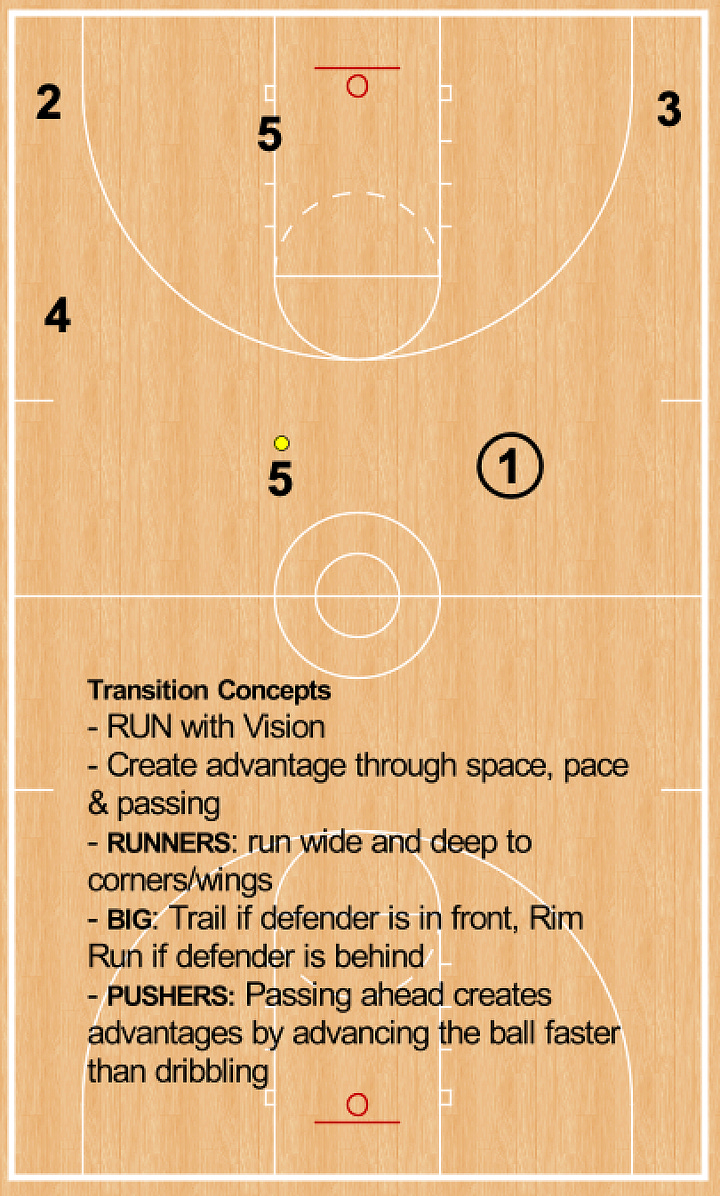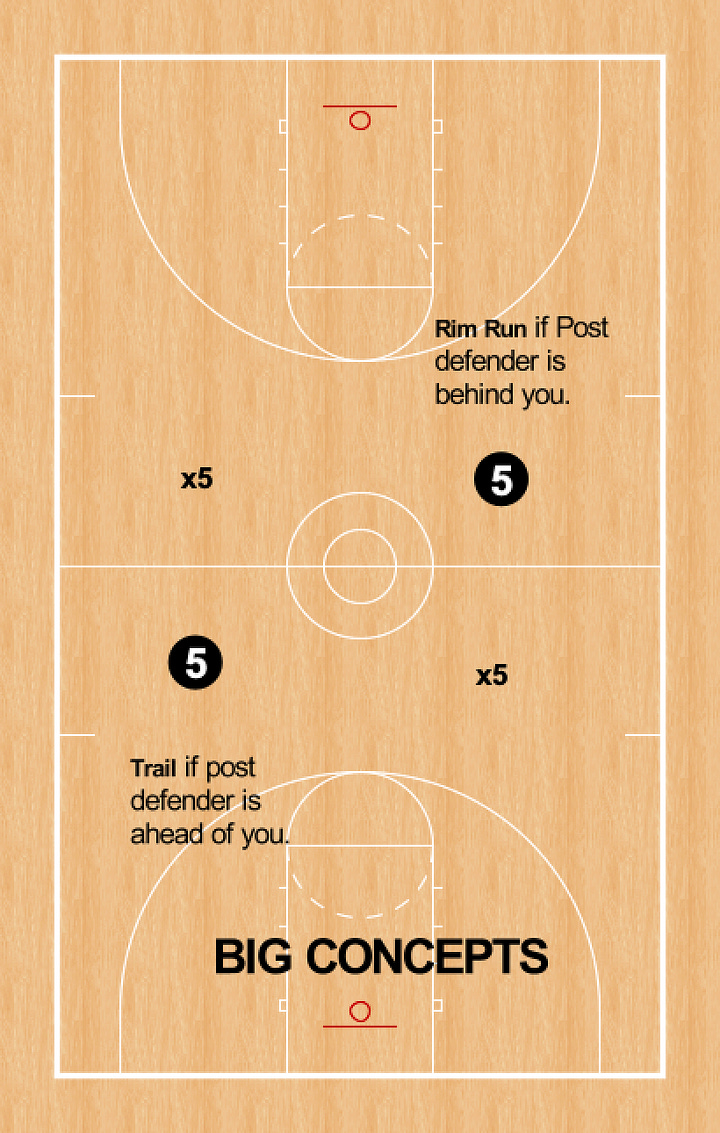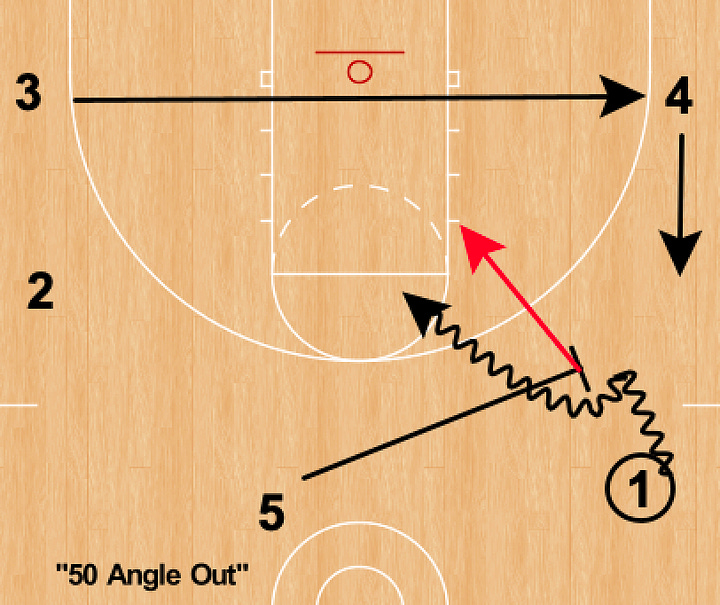🤔 Thought Starter
🗣 Communication builds community
⛹️ Building Transition Concepts
🏀 The Film Room
🎶 The Playlist
🤔 Thought Starter: Annie Dillard
We must somehow take a wider view, look at the whole landscape, really see it, and describe what’s going on here. Then we can at least wail the right question into the swaddling band of darkness, or, if it comes to that, choir the proper praise.
- Annie Dillard, Pilgrim at Tinker Creek
🗣 Communication Builds Community
With my new coaching role at the high school level, one thing has become clear: communication is important — especially with parents.
Someone once told me, “Communication builds community,” and that idea has stuck with me throughout my coaching journey. It’s not always a strength of mine, so it’s an area I’ve intentionally worked to improve over the years. In fact, writing this newsletter has been one way I’ve practiced a key part of strong communication: clarity.
Since being hired last month, I’ve had to speak to a number of important topics — most of them prompted by thoughtful questions from parents. Below are some of the core themes I’ve addressed, along with tips that might help other coaches navigate these conversations with purpose and confidence.
“There’s something that can be learned every single day. And I’m always working on being a better communicator.” - 🔗 Rick Carlisle, Indiana Pacers
Highlight Your Staff’s Strengths and Development Philosophy
When introducing your staff to parents, emphasize their value, experience, and commitment to growth — both as coaches and mentors. Share your program’s approach to player development and how it connects directly to your team’s identity and style of play.
Reinforce Team Culture and Shared Values
Clearly communicate that your program prioritizes leadership, hard work, and accountability. Explain how coaches and players collaboratively establish shared values and standards — and invite parents to support this culture from the sidelines.
Be Clear on Your Coaching Philosophy
If your approach involves methods like the Constraints-Led Approach (CLA), take the time to explain how and why it works. Emphasize that practices are intentionally designed to simulate game-like conditions, helping players improve decision-making and adaptability within team systems.
Define Accountability in a Positive Way
When using specific language or methods (such as “embracing the mess”), clarify what it means in your coaching context. Make it clear that high standards and accountability are non-negotiable — but that learning through mistakes is an essential part of growth.
Establish Boundaries With Respect and Clarity
Set respectful but firm boundaries regarding areas like lineups, playing time, and game strategy. Reinforce that while players are encouraged to advocate for themselves, those decisions ultimately rest with the coaching staff.
Use Film and Staff Collaboration to Show Intentionality
Let parents know that decisions are grounded in thoughtful planning and staff collaboration. Share how you use film and feedback to help players grow and to shape team direction.
Be Transparent About Scheduling and Competitive Goals
Explain the rationale behind your scheduling choices, especially when they involve travel, tough opponents, or special events. Help parents understand how these decisions support long-term goals for player development and team performance.
❓How do you communicate program philosophy with stakeholders?
⛹️ Building Transition Concepts
As I step into the “summer” season with my new program, the to-do list is a long one. With only a handful of practices over the next six weeks and three June tournaments on the schedule, finding the right balance between installing key concepts and preparing to compete is crucial.
One of our early priorities will be transition offense. In recent years, I’ve used a two-side transition with wing-to-corner screening action — ideal for guard-heavy teams with limited rim-runners. But with this group’s size and skill set, we’ll shift our emphasis toward getting a big on the rim or involved in early screening action.
Transition Framework
We’re not reinventing the wheel, but we are building a clear framework that will help us evaluate players and establish a base for early offense. Here’s a look at what we’re developing:
Core Transition Principles
Pace and Space off the Change of Possession
Running with Vision
Creating Dominoes (putting the defense in rotation)
Next is identifying player roles and court geography.
Player Roles and Court Geography
Pusher: Brings the ball up the floor. We want multiple players capable of pushing in transition. Pushers can become runners and vice versa.
Runner: Fills wide or strong side lanes to create a single side, double side, or three-side break.
Big:
Rim Run: Looks to finish, early seal, or seal for a teammate.
Trail: Involved in drag screens, on-ball, or away actions.




Training Progression
One way we’ll begin teaching is with a 3v2 series designed to give the Big decision-making reps in early transition. This drill allows them to explore options when they beat the defense down the floor or see a chance to create an early advantage. We’ll then adapt it to a 3v2+1 format, with a third defender delayed to simulate recovery defense.



Transition Actions
The next progression will be adding early offense actions — simple sets that initiate when the Big is ahead or trailing. We’ll start with just a few this summer, so that the players are not overwhelmed and can focus on improving on some basic concepts, including pace, space, and communication.
🔗 CoachingU+ recently posted TJ Saint’s session at the Alabama Association of Basketball Coaching that focuses on these early actions. Here are two that he shared.


❓What is your favorite way teaching early offense or concepts?
🏀 The Film Room
Here’s something I caught from Cholet during their Europe Cup game against Zaragoza. The delayed on-ball sets up a twist and forces a switch, creating a 2v1 against the tag. The corner defender stays home — and it leads to an easy … 🤣
Friend of the podcast and past guest Jason Hardy is working on a new series called The Foundation. The first episode focuses on basketball literacy for both players and coaches, highlighting the S.A.T.s of the game — Spacing, Angles, and Timing.








